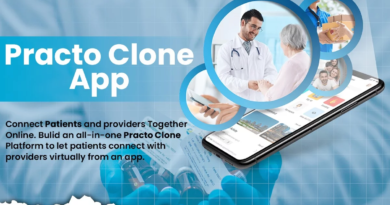How to Get Rid of Phantom Limb Pain: Rehabilitation Strategies
Daftar Isi
Starting off:
Phantom limb pain, or PLP, is a complicated condition that people who have had a leg amputated experience. It means that they feel things, like pain, in the limb that they no longer have. Even though there is no physical tissue, the brain keeps sending messages that cause pain and distress. This condition makes things very hard for both rehabilitation experts and patients. But as scientists have learned more about how PLP works, they’ve come up with different rehabilitation methods that are meant to ease its effects and make patients’ lives better. This piece goes into more detail about these strategies, looking at both old and new ways to deal with phantom limb pain.
How to Understand Phantom Limb Pain:
Before talking about ways to get better, it’s important to understand how phantom limb pain works. It is thought that the brain tries to make sense of confusing messages from the peripheral nervous system when someone is missing a limb. After an amputation, the brain’s nerve map changes, which lets the person feel things, like pain, in the limb that is missing. Additionally, things like nerve damage, inflammation, and psychological issues play a part in manifesting PLP.
Strategies for Rehabilitation:
Mirror Therapy: Mirror therapy is a well-known way to help people with phantom limb pain get better. It uses a mirror to make the lost limb look like it’s still there, which helps patients feel less pain and see movement. Patients can “trick” their brain into thinking that the phantom limb is moving by watching the image of their healthy limb move. This makes the pain feel less intense. Many studies have shown that mirror therapy can help, with many patients reporting significant pain relief and better performance.
Graded Motor Imagery (GMI):
Another good way to treat phantom limb pain is through graded motor imagery. It includes a set of mental tasks that are meant to change how the brain understands movement and feeling. Laterality recognition, imagined movement, and mirror therapy are the three steps of GMI. Patients can gradually feel less pain and improve their motor skills by doing these routines. GMI is especially helpful for people who have chronic phantom limb pain because it helps them feel better and work better over time.
Virtual Reality (VR) treatment:
VR treatment is starting to look like a good way to deal with phantom limb pain. Virtual reality treatment can help people deal with pain by immersing them in a virtual world. This can stimulate multiple senses and take their minds off of the pain. Virtual reality models can also help with motor imagery and mirror therapy, which can make rehabilitation programs more effective. Studies have shown that virtual reality treatment can help amputees feel better overall and lessen the pain of phantom limbs.
Sensory Feedback Prosthetics:
Progress in prosthesis technology has made it possible for sensory feedback prosthetics, which let users feel things like touch and movement. These prosthetic devices can help bridge the gap between the real and phantom leg by simulating the feelings of touch and movement. This can lower the risk of and severity of PLP. Sensors and actuators are what make sensory feedback prosthetics possible. They pick up and send sensory information, which gives users a feeling of being in control of their prosthetic limb.
TMS stands for transcranial magnetic stimulation.
Transcranial magnetic stimulation is a way to stimulate the brain without surgery that has shown promise in helping people with phantom limb pain. TMS can change neural activity and break down the bad pathways that cause PLP by sending magnetic pulses to certain parts of the brain. Studies have shown that TMS treatment significantly reduces pain, and the effects last longer than the stimulation time. TMS could be used as an extra treatment for people whose phantom limb pain won’t go away.
Mindfulness-Based treatments:
Mindfulness-based treatments, like mindfulness meditation and mindfulness-based stress reduction, have gotten a lot of attention because they might help people with chronic pain, like phantom limb pain, deal with their pain. Mindfulness techniques can help people deal with pain better by making them more aware of and accepting of their feelings, thoughts, and sensations in the present moment. Mindfulness methods can also help you relax and feel less stressed, which can indirectly ease the symptoms of PLP.
Multimodal programs for rehabilitation:
Multimodal rehabilitation programs use a variety of therapeutic methods to deal with the complex nature of phantom limb pain. People with PLP usually get all-around care in these programs, which include physical therapy, occupational therapy, psychological treatments, and ways to deal with pain. Multimodal rehabilitation programs try to improve overall health and function by focusing on the physical, mental, and social parts of the condition.
Problems and Plans for the Future:
Rehabilitation methods for phantom leg pain have shown promise, but there are still some problems to solve. Access to specialized care, funding for new interventions, and differences between individuals in how well they respond to treatment are still big problems that make it hard to control PLP well. More study is also needed to improve current interventions and come up with new ones that are more suited to the needs of each patient.
In conclusion:
Phantom limb pain is a difficult and complicated condition that affects people who have had a leg amputated. However, thanks to progress in remedial science and technology, there are now many ways to ease PLP symptoms and make patients’ lives better. There are many tools that rehabilitation workers can use to help people with phantom limb pain get better and regain their functionality. These include mirror therapy, graded motor imagery, virtual reality therapy, and sensory feedback prosthetics. As long as we use a personalized and multidisciplinary approach, we can keep making rehabilitation programs more successful and give people with this crippling condition hope.


